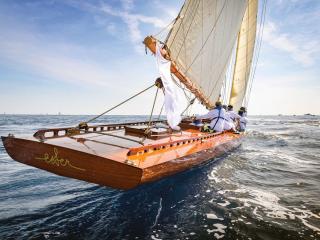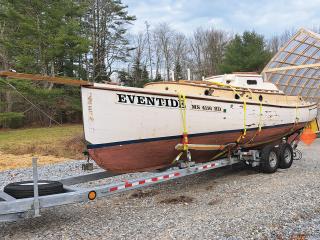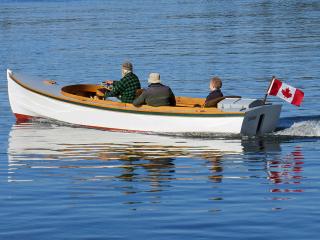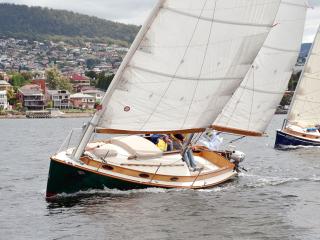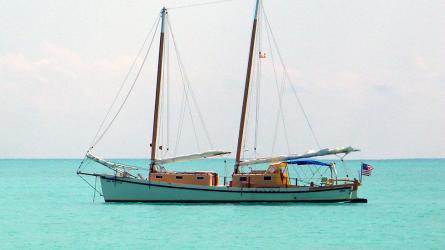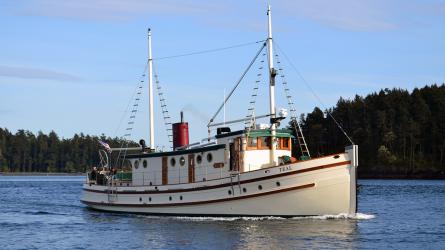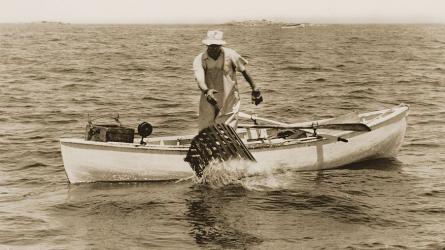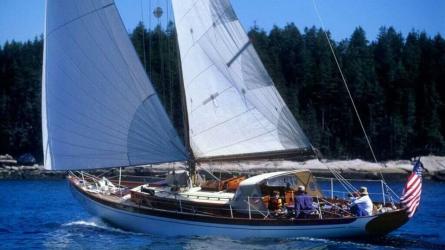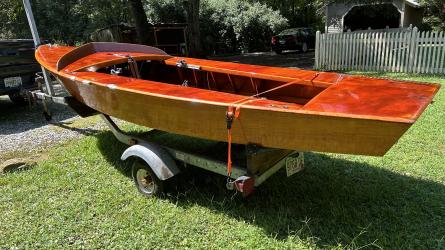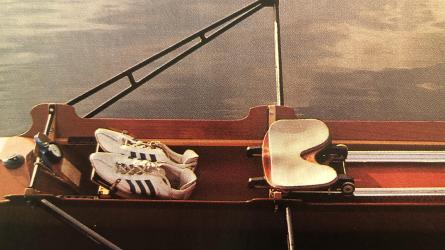March / April 2024
BISH
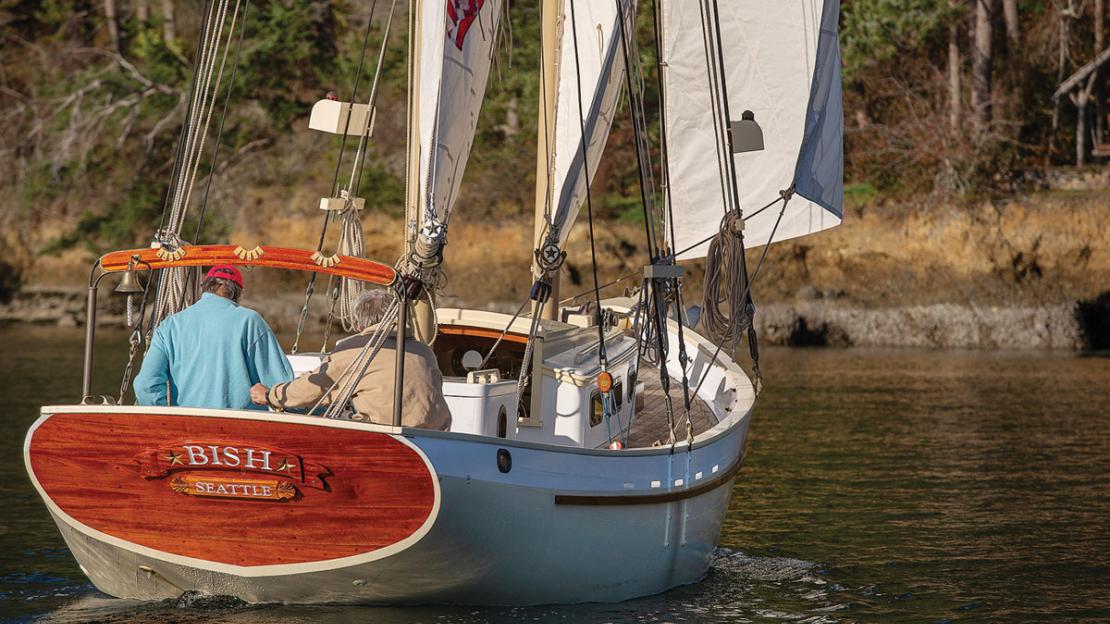
NEIL RABINOWITZ
BISH, a 28-footer designed by Murray Peterson in 1966, is resolutely traditional, from her gaff-schooner rig to the hull form and materials: purpleheart keel timber, Port Orford cedar planking on steam-bent white-oak frames, and a bright-finished Honduras mahogany transom. Karl Bischoff completed the construction in 2022 after 12 years of work, nearly all of it alone.
There weren’t many decent sailing days left as the screws tightened down on the gloomy fall of Seattle, Washington, and this day seemed to be turning into another bummer. A piddling southerly had faded to nothing, the overcast was thickening, and we were now stalled in a Puget Sound bay that resembled a vast, gray, stuporous pond. The same thing had happened last time we went out, and we had surrendered after two hours of pointless drifting. Karl Bischoff had had his new 28' Murray Peterson–designed schooner BISH essentially completed for more than a year, but a string of complications had prevented an honest sea trial under sail all that time. BISH had twice attended the Port Townsend Wooden Boat Festival, but under diesel power. How, Karl and I were aching to learn, does she actually sail?
We drifted for half an hour, chatting as aimlessly as the air, before we realized that BISH had gradually spun herself around. She was then pointing northeast, where there was a slight stir of a new northerly. Below us arose a barely perceptible bow wave. Entirely on her own, BISH had parsed the changing weather, turned herself nearly 180 degrees, and dialed in a close reach, for which the sails were already set. This happened not through any technological wizardry—the highest tech on this boat is a bilge pump. She just wanted to sail.
Ten minutes later we were reaching into a fine 10-knot breeze, BISH in her groove, the day redeemed.
Maybe it was also a redemption of Karl’s stubborn insistence on building BISH exactly as the designer intended.
For many amateur boatbuilders, the first thing we do when we open up a new set of plans, right there in the first hot flash of enthusiasm, is to begin scheming all the things we’ll change. And it might be justified when the design is nearly 60 years old—venerable enough to legitimately feel outdated, but not yet a sacred classic. BISH was built to Peterson’s Susan design, which was among his last dozen boats, drawn in the decade before his death in 1974, and it makes absolutely no concessions to modern conventions. It’s carvel planked, full-keeled, gaff-rigged, devoid of even the most modest rigging conveniences such as winches or cam cleats, and displaces 61⁄2 tons. The accommodations are split into two munchkin-sized cabins connected by a tunnel with only 45" of headroom. Anyone bedding down in an aft-cabin quarterberth will be canoodling with the engine. The companionway steps are minuscule and hazardous cantilevered perches that require serious care every time you negotiate them.
To read the rest of this article:
Click the button below to log into your Digital Issue Access account.
No digital access? Subscribe or upgrade to a WoodenBoat Digital Subscription and finish reading this article as well as every article we have published for the past 50-years.
ACCESS TO EXPERIENCE
2-for-1 Print & Digital Subscription Offer
For this holiday season, WoodenBoat is offering our best buy one, get one deal ever. Subscribe with a print & digital subscription for $42.95, and we’ll give you a FREE GIFT SUBSCRIPTION to share with someone special.
1 YEAR SUBSCRIPTION (6 ISSUES)
PLUS ACCESS TO MORE THAN 300 DIGITAL BACK ISSUES
PRINT+DIGITAL $42.95
Subscribe
To read articles from previous issues, you can purchase the issue at The WoodenBoat Store link below.
 Purchase this issue from
Purchase this issue from
